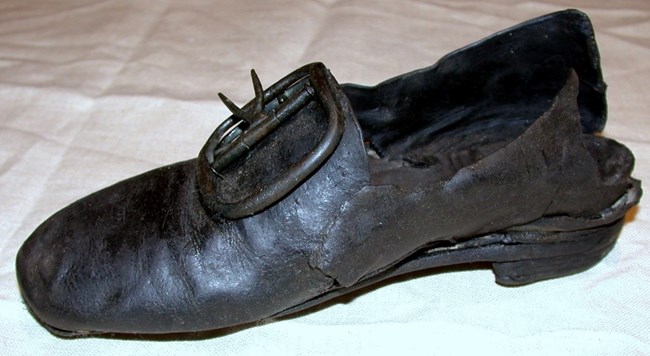Part of a series of articles titled Valley Forge Underfoot - Shoes of the Encampment.
Article
Strong Symptoms of Discontent
Part Four of a five-part series about the footwear worn during the Valley Forge winter encampment.
How did soldiers endure long marches on frozen ground with sub-standard footwear?
The most telling documentation on this came from two different sources in 1778. In April, Washington wrote John Banister:
“To see men without […] Blankets to lay on—without Shoes, by which their Marches might be traced by the Blood from their feet […]; Marching through frost & Snow […] & submitting to it without a murmur, is a Mark of patience & obedience which in my opinion can scarce be parallel’d.”1

NPS Photo
The wording resembles Washington’s famous February 16, 1778 quote. Today, it is inscribed on the front of the park's National Memorial Arch:
“Naked and starving as they are, we cannot enough admire the incomparable patience and fidelity of the soldiery.”
Yet, Washington’s subsequent statement remains crucial, but relatively unknown:
“that they have not been, ere this, excited by their sufferings, to a general mutiny and dispersion. Strong symptoms however of discontent have appeared in particular instances; and nothing but the most active efforts every where, can long avert so shocking a catastrophe.”2
Washington was not exactly honest with Banister, because the threat of mutiny hung over commanders at Valley Forge—in December 1777 and in February 1778.
2. “From George Washington to George Clinton, 16 February 1778,” Founders Online, National Archives, https://founders.archives.gov/documents/Washington/03-13-02-0466. [Original source: The Papers of George Washington, Revolutionary War Series, vol. 13, 26 December 1777 – 28 February 1778, ed. Edward G. Lengel. Charlottesville: University of Virginia Press, 2003, pp. 552–554.]
Last updated: March 18, 2021
